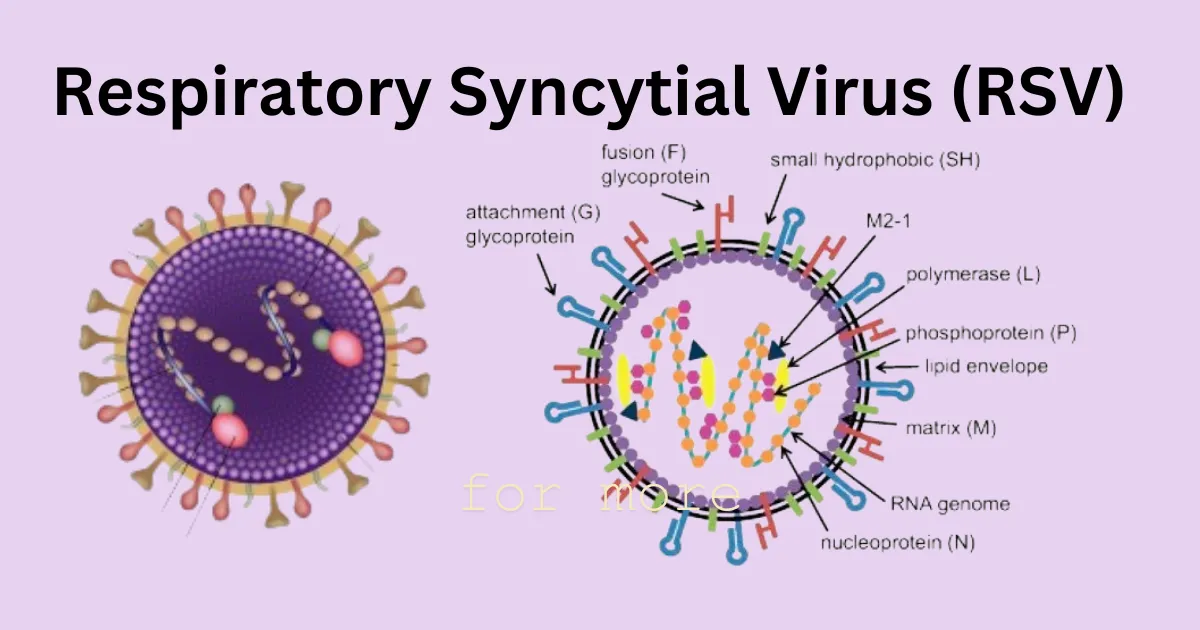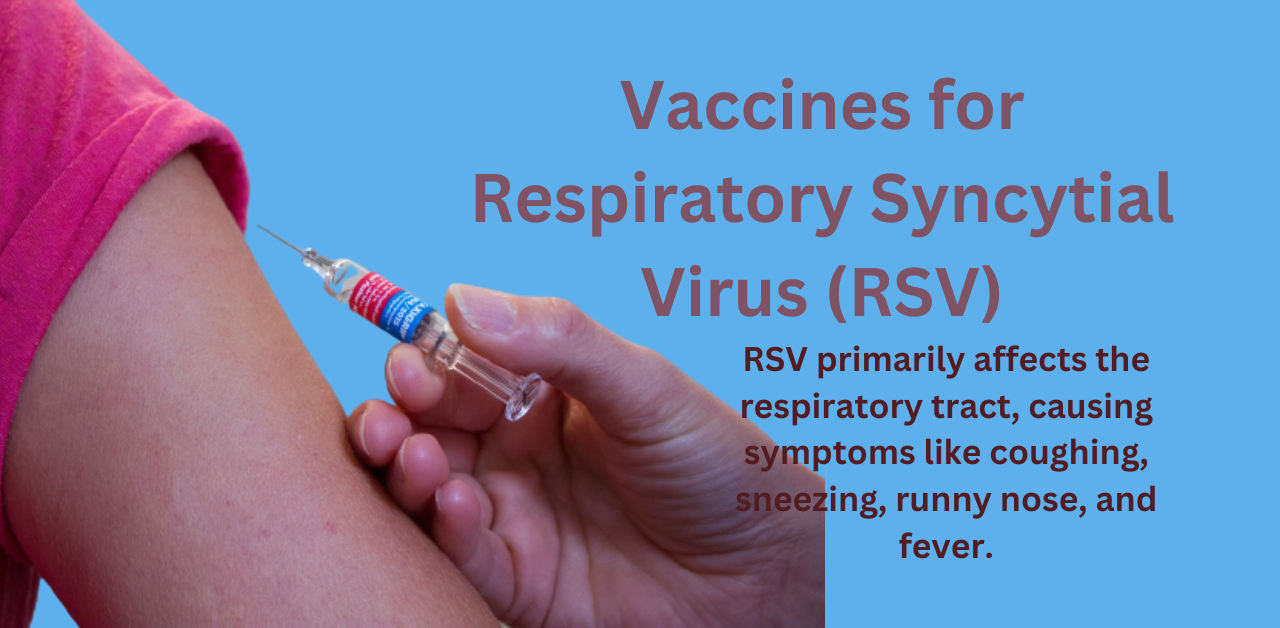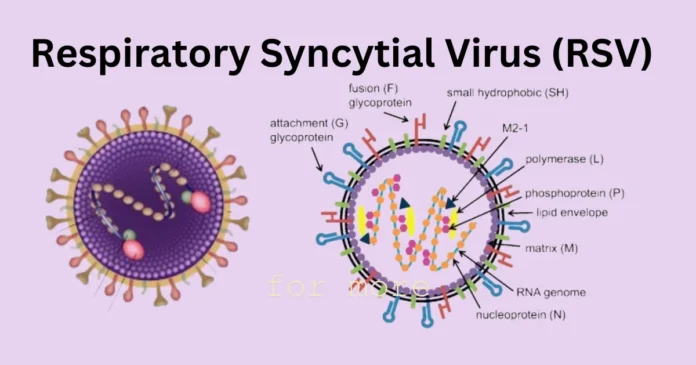Understanding the Importance of Vaccines for Respiratory Syncytial Virus (RSV)

Respiratory Syncytial Virus (RSV) is a common and highly contagious virus that affects the respiratory system, especially in infants and young children. The impact of RSV can be severe, leading to bronchiolitis and pneumonia. Vaccines for Respiratory Syncytial Virus (RSV) In recent years, vaccines targeting RSV have gained significant attention due to their potential to prevent and reduce the severity of RSV infections. This article explores the significance of RSV vaccines, their benefits, and their role in public health.
RSV Clinical Manifestations and Risk Factors

The Threat of RSV
RSV primarily affects the respiratory tract, causing symptoms like coughing, sneezing, runny nose, and fever. While most healthy individuals recover from RSV without complications, it can pose serious risks for individuals with weakened immune systems. Severe RSV infections can lead to hospitalization, which is a significant concern for parents and caregivers.
RSV Vaccines’ Importance
RSV vaccines play a crucial role in reducing the burden of RSV-related illnesses. By stimulating the immune system to produce protective antibodies against RSV, vaccines help prevent severe infections and their associated complications. Vaccines can also contribute to reducing the overall transmission of the virus within communities, leading to better control of outbreaks.
Types of RSV Vaccines
Several approaches are being explored to develop effective RSV vaccines. These include:
- Subunit Vaccines: These vaccines contain only a piece of the virus, typically a protein found on the virus’s surface. They are safer for vulnerable populations and can induce a strong immune response.
- Live Attenuated Vaccines: These vaccines contain weakened forms of the virus that cannot cause illness but can still stimulate a protective immune response.
- mRNA vaccines: A newer approach, mRNA vaccines provide the genetic instructions for the body to produce a viral protein and trigger an immune response. The success of mRNA vaccines against other diseases has generated interest in this technology for RSV.
Current Status of RSV Vaccines:
As of my knowledge, the RSV vaccines were in various stages of development and testing. Clinical trials have shown promising results, particularly in terms of safety and immune response generation. However, further research and larger trials are necessary to determine their efficacy in preventing RSV infections.
Public Health Impact
The successful development and widespread use of RSV vaccines could have a profound impact on public health. Vaccination could reduce hospitalizations, ease the strain on healthcare systems, and improve the quality of life for those at risk of severe RSV infections. It could also help protect infants who are too young to receive the vaccine by reducing the overall circulation of the virus.
Signs and Symptoms of Respiratory Syncytial Virus (RSV):
- Cough: RSV infections often begin with a persistent cough that may worsen over time. The cough can be dry or produce mucus.
- Runny Nose: Infected individuals may experience a runny or congested nose, along with sneezing and nasal discharge.
- Fever: Fever is a common symptom of RSV, especially in children. It may range from mild to high-grade.
- Sneezing: Frequent sneezing can occur as the virus affects the respiratory passages.
- Wheezing: Wheezing, a high-pitched whistling sound when breathing, may be heard, particularly in younger children.
- Difficulty Breathing: RSV can cause difficulty breathing, especially in infants, and may lead to rapid breathing or shortness of breath.
- Decreased Appetite: Infants and young children with RSV infections may show decreased interest in feeding due to congestion and discomfort.
- Irritability: RSV infections can make individuals, especially children, more irritable or fussy.
- Fatigue: Feeling tired or lethargic is a common symptom during the course of an RSV infection.
- Worsening of Preexisting Conditions: RSV infections can exacerbate preexisting respiratory conditions, such as asthma, and lead to more severe symptoms.
Testing for Respiratory Syncytial Virus (RSV)
- Nasal Swab Test: The most common method to diagnose RSV is through a nasal swab. A healthcare provider collects a sample of mucus from the nose or throat using a swab, which is then tested for the presence of the virus.
- Viral Culture: In some cases, a viral culture may be used to grow and identify the RSV virus. This method can provide information about the specific strain of RSV and its susceptibility to antiviral medications.
- Rapid Antigen Test: Rapid diagnostic tests are available that can provide results within a short period of time. These tests detect viral antigens in respiratory samples.
It’s important to note that while testing can help confirm an RSV infection, treatment decisions are often based on the clinical presentation of symptoms, especially in mild cases. In serious instances, hospitalization might be necessary to provide supportive treatments like oxygen therapy or intravenous fluids
Prevention of Respiratory Syncytial Virus (RSV) Infections
- Hygiene Practices: Practicing good hygiene is crucial to preventing the spread of RSV. This includes regular handwashing with soap and water, especially after being in close contact with someone who has a cold or respiratory symptoms.
- Cover Coughs and Sneezes: Encourage proper cough and sneeze etiquette by covering your mouth and nose with a tissue or your elbow to prevent the release of respiratory droplets into the air.
- Stay Home When Sick: If you or your child are experiencing cold-like symptoms, it’s important to stay home to avoid spreading the virus to others, especially in settings with vulnerable populations.
- Vaccination: While no specific vaccine for RSV was available as of my last knowledge update in September 2021, researchers were actively developing vaccines to prevent RSV infections. Stay informed about the latest developments and recommendations regarding RSV vaccines from reputable health organizations.
- Clean and Disinfect: Regularly clean and disinfect frequently-touched surfaces, such as doorknobs, toys, and electronic devices, to reduce the risk of RSV transmission.
- Breastfeeding: For infants, breastfeeding can provide antibodies that help protect against various infections, including RSV.
- Avoid Smoking: Avoid exposure to tobacco smoke, as it can worsen respiratory symptoms and increase the risk of severe RSV infections.
- Proper Ventilation: Ensure proper ventilation in indoor spaces to reduce the concentration of viral particles in the air.
- Face Masks: In situations where RSV is prevalent, wearing masks, especially in crowded or enclosed spaces, can help reduce the risk of respiratory virus transmission. Note that mask recommendations may vary based on current public health guidelines.
- Isolation: If a family member is diagnosed with RSV, consider isolating them from others, especially infants and high-risk individuals, to prevent further spread.
It’s important to stay updated with the latest information vaccine for RSV was widely available, but ongoing research and developments may have occurred since then. Always consult with healthcare professionals and refer to current medical sources for the most up-to-date information on RSV prevention and management.
Conclusion
The development of effective RSV vaccines holds great promise for preventing severe infections, reducing hospitalizations, and ultimately improving public health outcomes. Continued research and investment in RSV vaccine development are essential to ensuring a healthier future for individuals of all ages.
Frequently asked questions (FAQs) about respiratory syncytial virus (RSV)
What is Respiratory Syncytial Virus (RSV)?
Respiratory Syncytial Virus (RSV) is a common virus that can cause respiratory infections in people of all ages. It is a leading cause of bronchiolitis and pneumonia in infants and young children.
How is RSV spread?
RSV is primarily spread through respiratory droplets from coughs and sneezes. It can also spread by touching contaminated surfaces and then touching the face.
What are the symptoms of an RSV infection?
Common symptoms include coughing, runny nose, fever, sneezing, wheezing, difficulty breathing, and decreased appetite. In severe cases, it can lead to more serious respiratory problems.
Who is at higher risk for severe RSV infections?
Infants, young children, older adults, and individuals with weakened immune systems or preexisting respiratory conditions are at higher risk of severe RSV infections.
How can I protect myself and my family from RSV?
Practicing good hygiene, avoiding close contact with sick individuals, covering coughs and sneezes, and staying home when sick are important preventive measures. Additionally, maintaining a clean environment and following public health guidelines can help reduce the risk of RSV transmission.
Should I use face masks to prevent RSV?
Wearing face masks, especially in crowded or enclosed spaces, can help reduce the risk of respiratory virus transmission, including RSV. However, recommendations may vary based on current public health guidelines.
Is RSV the same as the flu or COVID-19?
RSV, the flu, and COVID-19 are caused by different viruses, but they can share similar symptoms. It’s important to consult with healthcare professionals for proper diagnosis and treatment.
Can RSV be treated with antibiotics?
RSV is a viral infection, and antibiotics are not effective against viruses. Treatment for RSV focuses on relieving symptoms and providing supportive care.
When should I seek medical attention for an RSV infection?
If you or a family member experience severe symptoms such as difficulty breathing, rapid breathing, persistent fever, or worsening symptoms, seek medical attention promptly.




